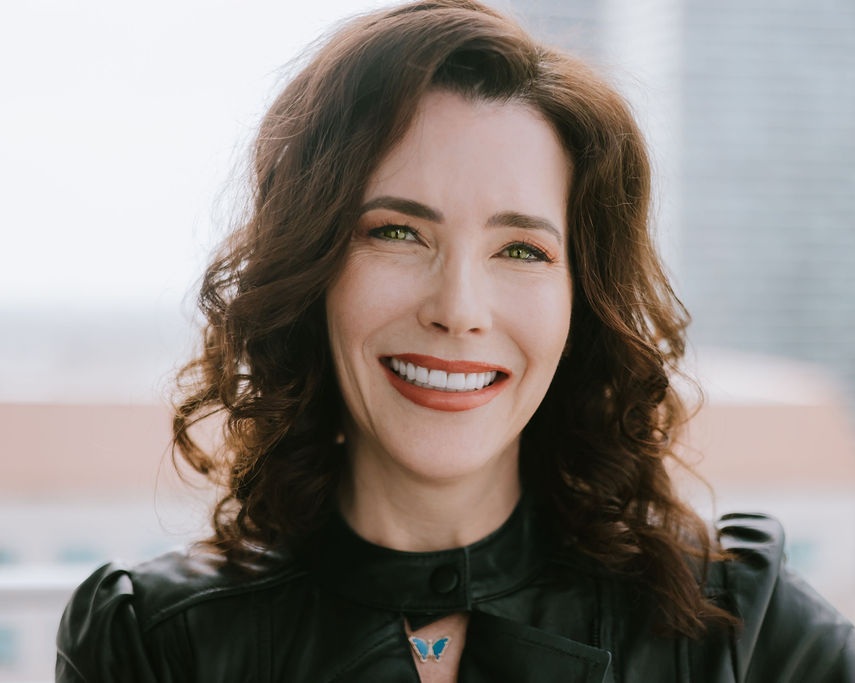
As a trailblazing author, preeminent expert and influential speaker, Jen is at the forefront of workplace wellbeing and human sustainability. Her journey from burnout to breakthrough has positioned her as a visionary leader in reshaping the world of work.
We are delighted that Jen will be speaking in New York as part of our US summit. We caught up with her to see how she’s feeling in the runup to the event.
Hi Jen, we are thrilled that you will be speaking at the Wellbeing at Work US Summit in March. Our first and most important question is, how are you doing today??
Thank you for asking! I’m trying to practice what I preach – being intentional about my energy, choosing what deserves my “hell yes,” and finding freedom in letting go of what doesn’t serve me. Every day is a practice in being present and making conscious choices about how I show up.
As a leader based in the region, what are the main challenges you are facing when it comes to employee wellbeing and mental health?
The main challenge I’m seeing is that we’re still treating wellbeing as a program rather than viewing it through a systems lens. Leaders want to support wellbeing but often lack the tools and understanding to create sustainable change. Another challenge is the tension between the growing awareness of wellbeing’s importance and the persistent pressure to prioritize short-term performance metrics.
What strategies have you seen developing over the past 6 months, both internally and externally, that are moving the dial on wellbeing in the workplace?
What’s encouraging is the shift from viewing wellbeing as an individual responsibility to understanding it as a systemic challenge. Organizations are starting to integrate wellbeing into their leadership development, recognizing that we need wellbeing-intelligent leaders who can create environments where people can thrive. There’s also a growing focus on measuring the impact of wellbeing initiatives beyond traditional metrics.
Why is employee wellbeing so important to you personally?
My passion for wellbeing is deeply personal. Having experienced burnout firsthand during my corporate career, I understand the cost of treating human sustainability as optional. But more than that, I’ve seen how transformative it can be when organizations prioritize wellbeing at a systemic level. It’s not just about preventing burnout – it’s about creating conditions where people and organizations can sustainably flourish.
What impact is AI having in your organization and how are you managing that?
AI isn’t just changing how we work – it’s fundamentally shifting how we think about human capability and contribution. The key is approaching AI through a wellbeing lens: How do we use it to enhance rather than replace human potential? How do we ensure it supports rather than strains mental health? The organizations getting this right are focusing on using AI to reduce mundane tasks while creating more space for uniquely human skills like creativity, empathy, and complex problem-solving.
Other than AI, are there any challenges that you are seeing for the first time and how are you addressing them?
Beyond AI, we’re seeing unprecedented challenges around psychological safety and trust. With layoffs, return-to-office mandates, and changing work models, employees are struggling with a sense of security. The solution isn’t more wellness programs – it’s building systems that support human flourishing and leaders who understand how to create high-trust environments.
What areas do you think employers should be focused on over the next 12 months?
- Building wellbeing intelligence into leadership development
- Creating systems that support sustainable performance
- Understanding wellbeing as a strategic advantage, not a nice-to-have
- Developing metrics that capture the full impact of wellbeing initiatives
- Integrating wellbeing into organizational design rather than treating it as an add-on
Do you feel that investment in employee wellbeing in the region is increasing or decreasing and is that a direct reflection on HR leaders’ increasing ability to demonstrate effective returns of their strategies to leadership?
Investment in wellbeing is evolving rather than simply increasing or decreasing. Organizations are moving away from superficial wellness programs toward more integrated, systemic approaches. The most effective HR leaders are demonstrating ROI not just through traditional metrics but by showing how wellbeing connects to everything from innovation to customer satisfaction to talent retention.
How has your organization been leading the way?
My focus has been on pioneering the concept of wellbeing intelligence – helping organizations understand that wellbeing isn’t just about programs but about creating systems where people can thrive. Through The WorkWell Podcast, speaking engagements, and collaboration with organizations like the World Wellbeing Movement, I’m working to shift the conversation from individual resilience to organizational transformation. The goal is to make wellbeing as fundamental to leadership as strategy and operations.
Jen will be speaking in New York at the Wellbeing at Work Summit US which takes place in New York, Austin Texas and virtually. Further details on the Summit can be found here.



